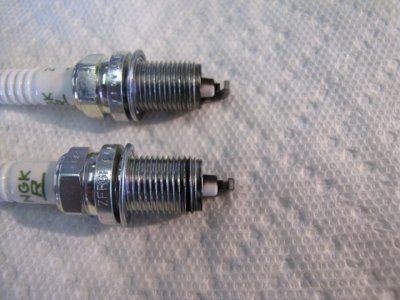70runner
Well-Known Member
.030 over, stealth heads, SRP pistons approx .006 in the hole, stock iron manifolds, Lunati 60303, stock rockers, 10:2CR, TTI 2.5 exhaust, pertronix II with flamethrower II coil. Carbs are new 71 repros, 65jets, 6.5PV, #35 squirter. Engine is on test stand with 727 attached. Engine idles at 850rpm, 20deg base timing, 14-15" vacuum, however, to get sufficient idle center carb throttle blade is well up the idle transition slot. Center screws at approx 1.5 turns, outboards approx 1/8 turns. Idle at approx 13 on wideband AF meter. Here's a short video of a recent startup/run: http://youtu.be/JN5rMmg_bhg
First procedure: with center carb removed, adjusted the throttle/transition slot to "square", then adjusted timing for max rpm/vac without touching idle screw. Highest rpm I could achieve was barely 600 with timing at 32deg. Engine won't start with that much base.
Second procedure: returned center to transition circuit (so it would start and idle), seated outboard idle screws. No significant effect on AF, approx 13.2, rough idle, hard start.
Third procedure: enlarged outboard throttle air bleed holes from .082" stock to .086". Some improvement in AF, to about 13.4, otherwise no change in rpm or vac (so still in transition circuit).
Should I continue to enlarge the bleed holes or is there something else I can try ?
First procedure: with center carb removed, adjusted the throttle/transition slot to "square", then adjusted timing for max rpm/vac without touching idle screw. Highest rpm I could achieve was barely 600 with timing at 32deg. Engine won't start with that much base.
Second procedure: returned center to transition circuit (so it would start and idle), seated outboard idle screws. No significant effect on AF, approx 13.2, rough idle, hard start.
Third procedure: enlarged outboard throttle air bleed holes from .082" stock to .086". Some improvement in AF, to about 13.4, otherwise no change in rpm or vac (so still in transition circuit).
Should I continue to enlarge the bleed holes or is there something else I can try ?
















